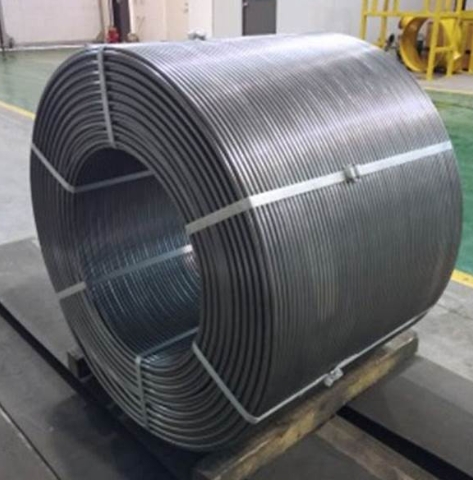
The steel industry is constantly seeking solutions to increase the quality of its products while reducing production costs. The use of cored steel wire is crucial to achieving these objectives. Cored wires can be used to introduce different elements into a molten alloy, thereby refining or altering its characteristics. These elements can be ferroalloys (metals), chemicals or metals. They're injected into steel melt using cored wires.
In this article we will focus on cored wires that are used for the calcium treatment of molten steel. This is known by the name ladle metalurgy and it is an important stage in steelmaking.
For this type of application, there are many different types of cored wires available. The main differences are the sheath thickness and the metallurgical performance they deliver. The sheath is the main factor that determines the performance of a wire cored. It determines how deeply it penetrates the slag, and therefore the effectiveness of calcium treatment.

Sheaths are produced in a variety of ways, including extruded, welded or folded sheaths. The most effective cored wires to treat molten steel with calcium are welded wires that have a powder filling ratio between 0.6 and 1,5 mm. These sheaths are advantageous because they hermetically contain the calcium. This is important as it prevents evaporation and increases the effectiveness of the calcium in treating steel.
The welded outer sheath ensures the calcium is released in a uniform manner and not at random intervals. AFFIVAL designed a new, solid cored calcium wire with a welded jacket called Hi-Cal (r) to address this issue. This cored wire is patented and has a number advantages over the conventional calcium cored wiring.
Hi-Cal® cored wires can be fed at lower injection speeds than conventional calcium-cored wires. This allows the wire to reach the layer of slag quicker, reduces the oxidation in the slag as well as increasing the rate of calcium absorption into molten metal. It also offers a much better recovery of calcium in comparison with other cored wires.
Besides the above mentioned advantages, the higher feeding speed of the Hi-Cal(r) coredwire results in a more homogenous distribution of the core material. This results in a more intense reaction of the slag with an increase in calcium yield. It also improves steel machinability by removing inclusions more effectively and deoxidizing it. Hi-Cal (r) cored steel wires can reduce the consumption of other cored steel wires, and therefore lower the cost for the calcium treatment. The steelmaking process and wire feeding equipment do not need to be changed.

Write a Message